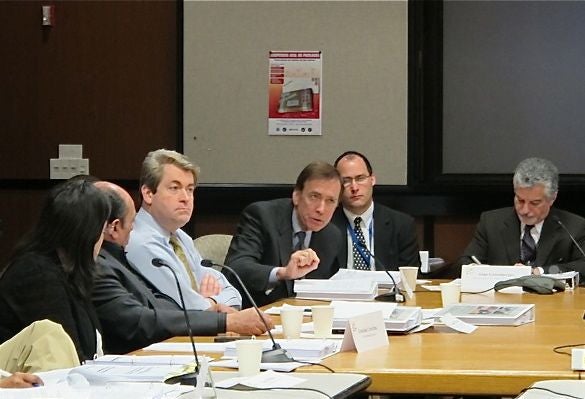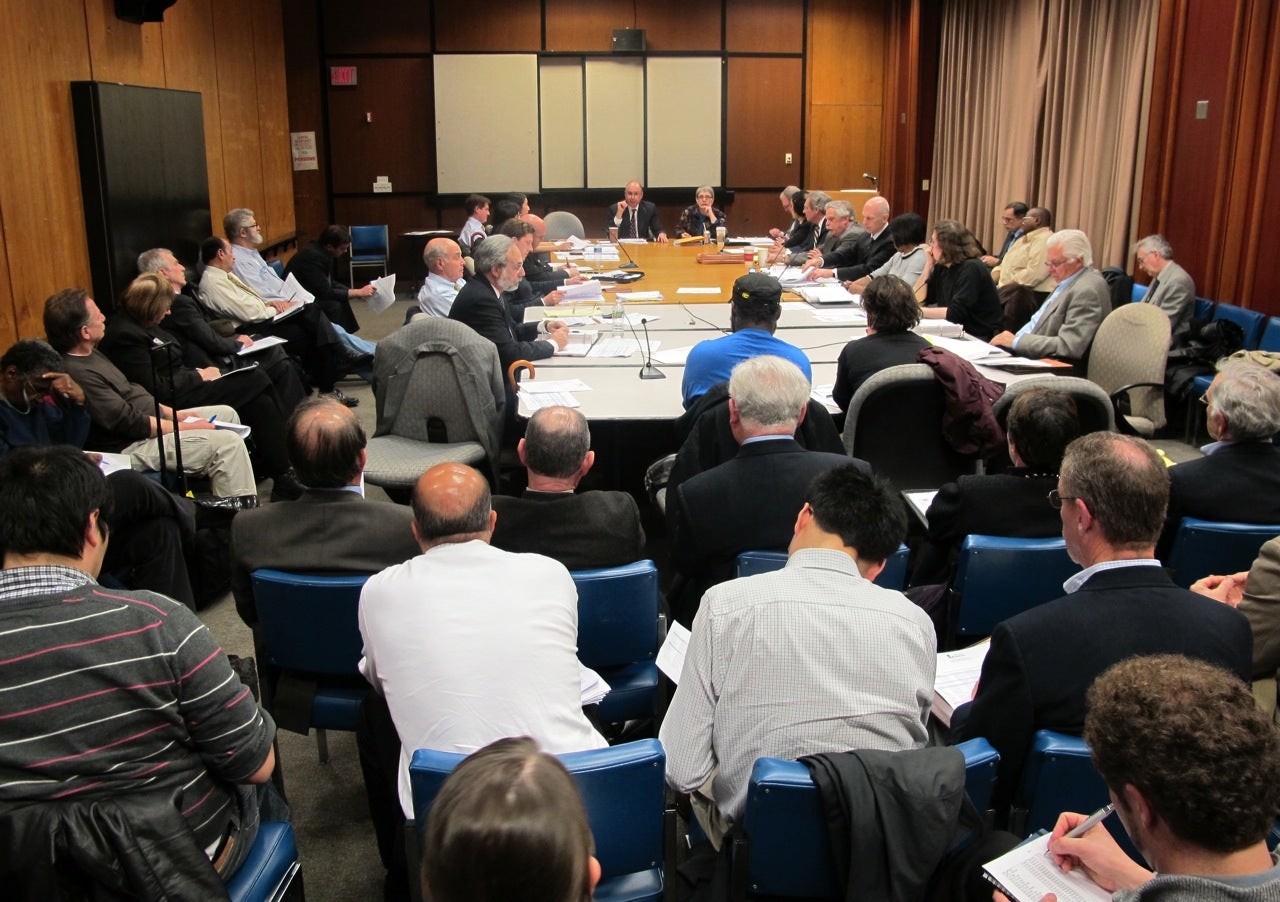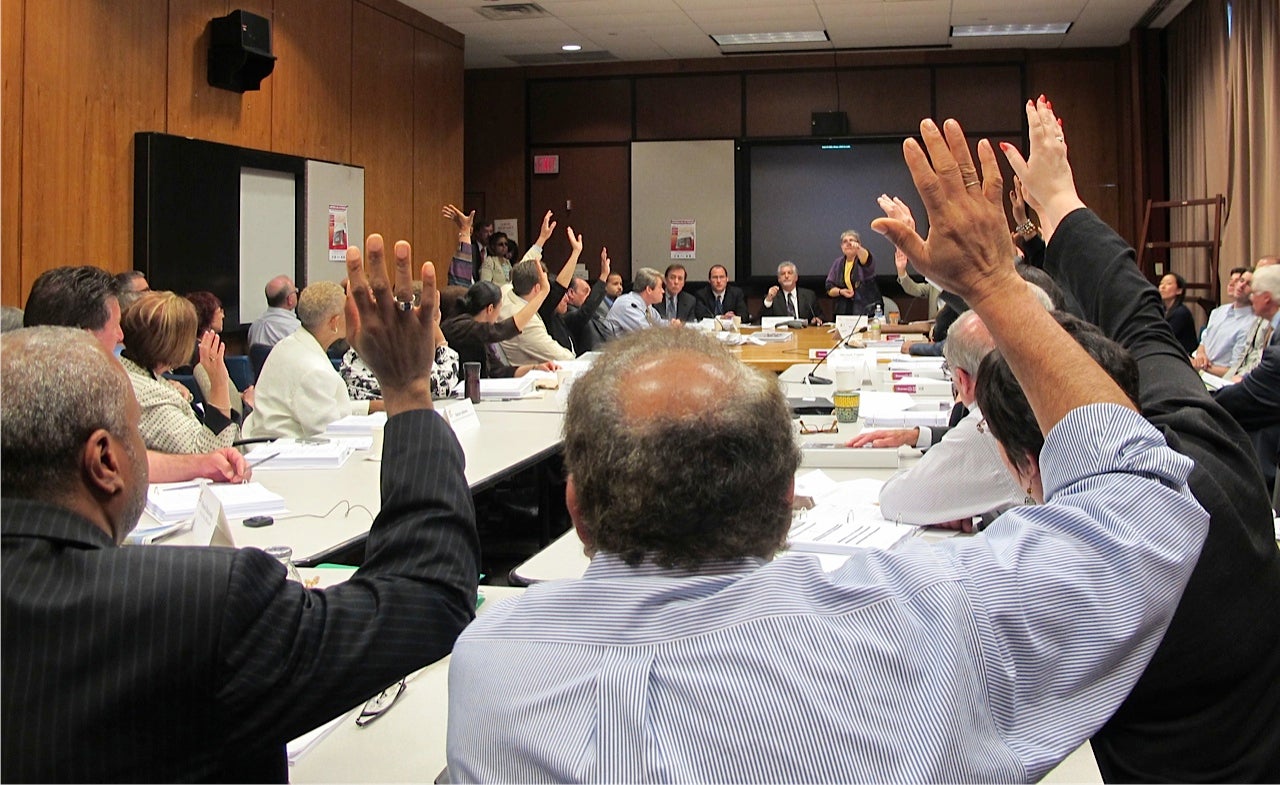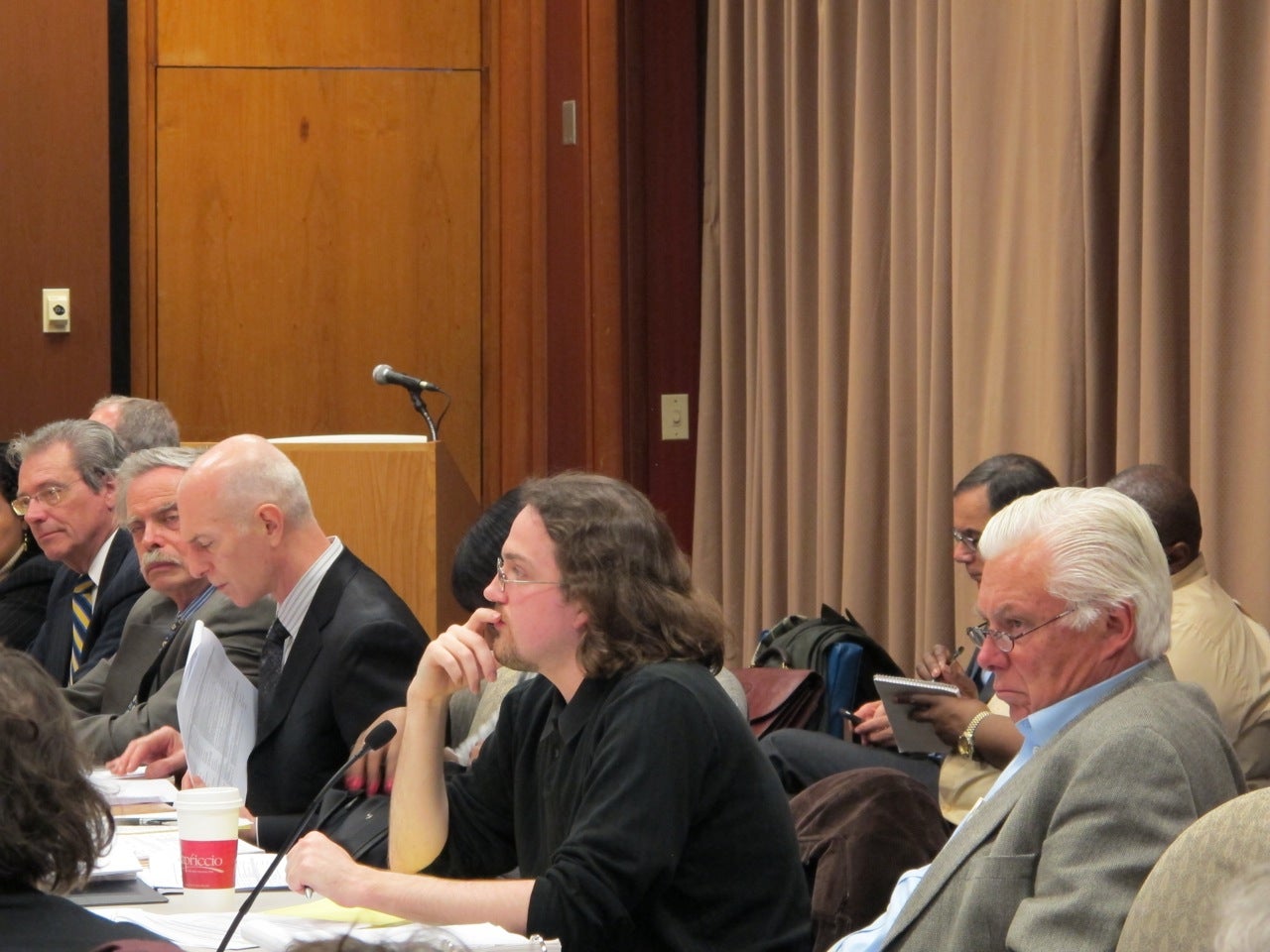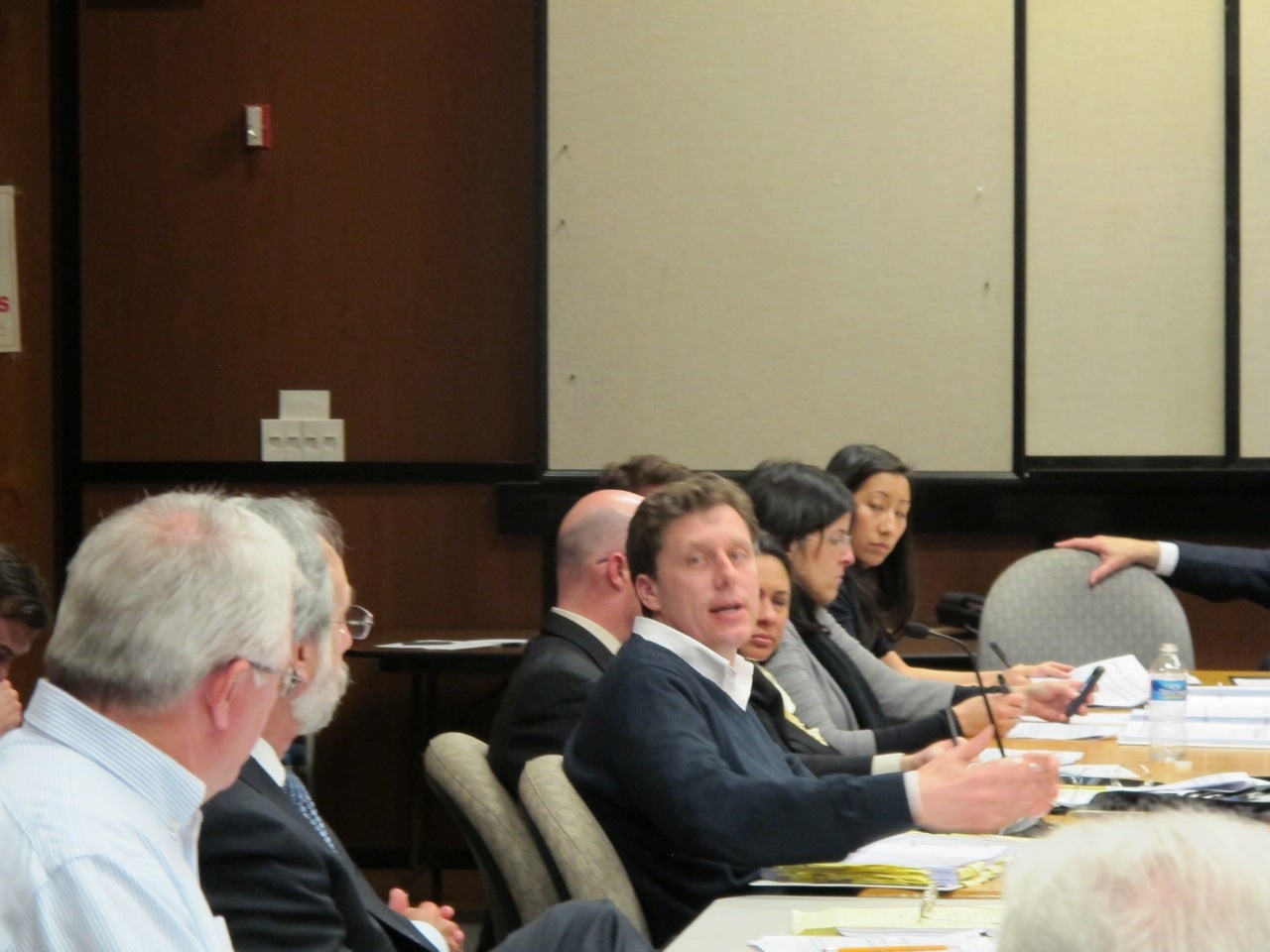Zoning reformers react to Councilman Green’s proposed changes to the draft code
Last week, At-Large City Councilman Bill Green issued a memo calling for ten specific changes to the draft new zoning code put together by the Zoning Code Commission, of which he is a member.
As Green explained in an exclusive interview with PlanPhilly, his new memo backs off a phased implementation plan which he had initially supported as one of nine ZCC members who favored the Commission’s minority report. His memo instead calls for adoption of a slightly amended version of the draft code, with certain uses prohibited or permitted by special exception until after individual neighborhoods go through the district remapping process.
Among Philadelphia’s planning and development communities, Green’s recommendations were met with varying degrees of interest, but seemingly little surprise. In fact, members of the ZCC told PlanPhilly that they thought Green’s proposals would at least jumpstart the conversation about reform, and, at best, hasten the conclusion of zoning reform in Philadelphia.
“I don’t think [Green’s proposal] is going to slow us down,” said Eva Gladstein, executive director of the ZCC. “And in the sense that it’s putting issues on the table, it could speed us up.”
Peter Kelsen, a ZCC member and partner at Blank Rome, said he thinks it is clear that Green is trying to compromise, and doesn’t expect the recommendation memo to cause any major roadblocks in terms of the timeline for getting a new code passed. “What we were pleased to see,” Kelsen said, “is that there’s been movement from the minority report we received to this position.”
Both Gladstein and Kelsen stopped short of saying they outright objected to anything in Green’s memo, but did say they had “questions” about a number of items.
Gladstein said she wanted to hear more about Councilman Green’s thinking behind his eighth recommendation, regarding Community Benefits Agreements (CBAs.) That recommendation calls for the elimination of the requirement that any existing CBAs be submitted to the ZBA prior to its decision on a zoning application.
Green framed this recommendation as a matter of potential liability for the City if it fails to enforce a Community Benefits Agreement. “I don’t know why we want to get into the business of disputes between communities and developers,” Green said. His memo reads, “CBA’s may take place as private agreements between community organizations and developers but the City should not be enforcing them.
Green is not in favor of having them on the official record at all. Gladstein said she didn’t understand the reason for that recommendation.
“We have specific language that says we will not be liable for enforcing third-party agreements,” Gladstein said. (See §14-109 of the draft.)
She also has concerns about Green’s fifth and sixth recommendations, regarding “potentially harmful uses” in residential and commercial districts, respectively. It’s these two recommendations where Green calls for prohibiting or permitting by special exception certain uses until after neighborhoods can map them into their local districts.
Green sees this as a way to prevent the automatic district conversion the draft calls for from allowing noxious uses to take a foothold in communities that don’t want them. Gladstein said it could compromise the intended coherence of the new code by allowing a “potentially unlimited number of variations for every district.”
She fears, for example, that Green’s proposal could create a situation in which CMX-3 means something very different in different neighborhoods. “The integrity of the code is important,” Gladstein said, “and the predictability of the code is important.”
Keslen echoed that view, saying that allowing multiple district treatments would create “chaos” similar to Philadelphia’s current zoning process. In addition, Kelsen, making it clear that he was speaking merely as an attorney, disagreed with Green’s characterization of the special exception procedures in the draft code.
The seventh recommendation in Green’s memo deals with the burden of evidence in special exception cases. Green argues that, following case law, the burden of evidence is currently and rightly on the applicant, rather than on any potential objectors. He also argues that the draft code shifts that burden to protestants, giving neighborhoods what he sees as an overly demanding standard to meet if they wish to successfully block a project in their communities.
Kelsen argued that the draft code actually formalizes the burden of evidence required under the Bray v. Zoning Board of Adjustment decision, which Green favors following. He was confused about the recommendation, because he sees the draft’s provision on special exceptions as doing exactly what Green suggests it should do.
“We were very careful about taking the standards that the courts have approved, forever,” Kelsen said.
One of the more controversial aspects of Green’s memo was not directly related to any of his specific recommendations, but rather the tone of his introduction.
In the opening to his memo, Green argues that it is unfair the only neighborhoods that have been able to overlays or special protections are those that have organized and sophisticated planning apparatuses. In particular, Green wrote that the Northern Liberties Neighborhood Association approached the ZCC after the preliminary report was submitted and negotiated extra controls for its neighborhood.
“Why an exception for Northern Liberties and not your neighborhood?” Green wrote. “NLNA spoke up and has lawyers.”
Matt Ruben, the president of NLNA, said he objected to the implication that his association engaged in “anything not totally above board.” Ruben said that his group negotiated overlay controls that were “scaled back and more permissive” than what the current code provides. He said it was necessary for his community to maintain some level of control over the type and amount of development taking place in Northern Liberties.
Since the base districts in the new code are generally more permissive than the current ones, Ruben felt that Northern Liberties could and should have somewhat more control than the draft provides. Ruben said that the problem he saw wasn’t with the allowance of certain uses, such as restaurants, but in the lack of control of the amount and concentration of those uses.
“An overlay triggers a case-by-case review,” Ruben said. He said the reason that his group was able to get extra controls while others were not was a matter of timing, not attorney-power.
NLNA decided to wait until after the draft was largely finished, rather than ask to keep some of its overlay controls closer to the beginning of the reform process, when the Commission was focused on making the code uniform for the entire city.
“What [Green] fails to realize is that different levels of community organization is not the only reason this stuff varies,” Ruben said. He added, “Overlays are about local conditions, and not about squeaky wheels getting the grease.”
Mostly, Ruben said he thought that Green’s memo implied that Northern Liberties was getting special treatment because it had a savvy neighborhood organization, which somehow bent the rules in order to maintain control over development in its community.
In an email to PlanPhilly, Councilman Green sought to back away from that implication. “To be clear,” Green wrote, “I support NLNA’s proposed suggestions for their neighborhood. They are in the right. I think every other neighborhood should have the same opportunity […] it is wrong of the ZCC to treat some neighborhoods as more equal than others.”
Aside from that question of tone, however, there seems to be at least tentative consensus among stakeholders that Green’s recommendations will help rather than hurt the zoning reform process going into the fall.
As Eva Gladstein said, “Frankly, based on the number of decisions we made in [391] pages of the draft, I don’t think this is overwhelming.”
Council will officially re-open hearings on the ZCC’s proposals tomorrow, Sept. 14, at 10 a.m.
Contact the reporter at jaredbrey@gmail.com
WHYY is your source for fact-based, in-depth journalism and information. As a nonprofit organization, we rely on financial support from readers like you. Please give today.



